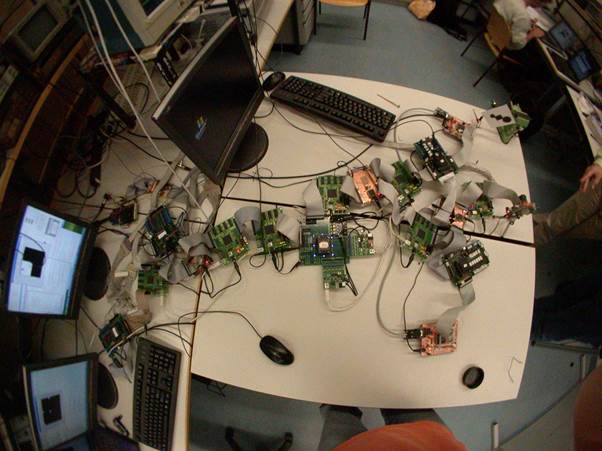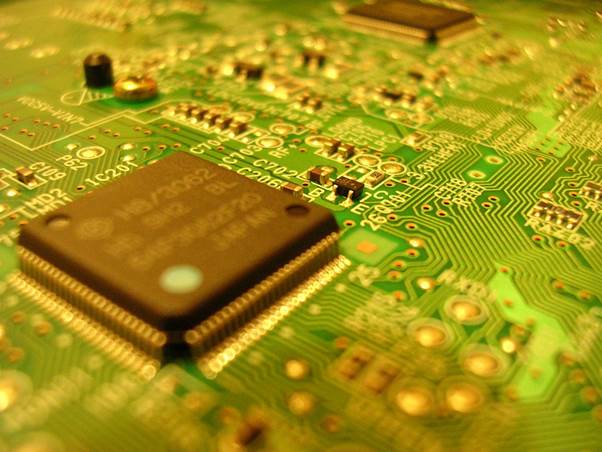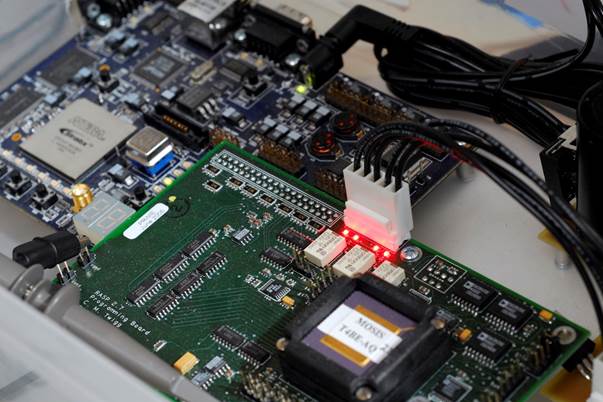Processors that mimic the human brain
could be the next big disruption in computing
To make use of these neurosynaptic cores,
IBM proposes a programming model based on reusable and stackable building
blocks called corelets. IBM's ultimate goal is to build a processing system
with 10 billion neurons and 100 trillion synapses drawing just one kilowatt of
power. Currently, IBM and Cornell University are working on the second
generation of neurosynaptic processors, which will also emulate 256 neurons
each, like the first attempt. But with a newly developed inter-core
communication, the new processors are expected to contain around 4000 cores
each, making a total of around one million neurons per processor.

To
make use of these neurosynaptic cores, IBM proposes a programming model based
on reusable and stackable building blocks called corelets.
A chip that can anticipate user actions
Last year, Qualcomm revealed a successful
effort in this direction. Their Zeroth project was driven by an understanding
of people's changing expectations from mobile devices. In the future, people
will want their devices to understand them and help them without anything being
told. They will want to interact more naturally with their devices. "The
computational complexity of achieving these goals using traditional computing
architectures is quite challenging, particularly in a power- and size-constrained
environment vs in the cloud and using supercomputers," writes Samir Kumar,
director-business development, Qualcomm.

Last
year, Qualcomm revealed a successful effort in this direction. Their Zeroth
project was driven by an understanding of people's changing expectations from
mobile devices.
Hence, they set out to create a new
biologically-inspired computer processor designed like the human brain and
nervous system so that devices could have embedded cognition driven by brain
inspired computing. Eventually, Zeroth was born. Zeroth-based products will not
just have human-like perception but also the ability to learn on-the-go based
on feedback from the environment, like we do. They have also taught the
processor to perceive things the way humans do, based on mathematical models
created by neuroscientists.
These models accurately characterise
biological neuron behaviour when they are sending, receiving or processing
information. Qualcomm aims to create, define and standardise this new
processing architecture, which they call the neural processing unit (NPU), so
that it can be used in a variety of devices alongside other chips, so that a
combination of programming, learning and self-correction will characterise
future devices.
To demonstrate the success of Zeroth, last
year Qualcomm built a robot using the NPU and taught it to do various things
such as pick only the white from a selection of assorted boxes, sort and
arrange toys in a kid's room and so on, all by 'teaching' and not 'programming'
it.
An analogue brain
While the previous two examples are based
on 'digital neurons,' a neuro-morphic system being developed by the University
of Heidelberg as part of the European Union sponsored Human Brain Project, is
based on analogue circuitry, which makes it closer to the real brain!

While
the previous two examples are based on 'digital neurons,' a neuro-morphic
system being developed by the University of Heidelberg.
In order to understand the working of the
brain, from that of individual neurons to whole functional areas, the
BrainScales project takes three approaches: in vivo biological experimentation,
simulation on petascale supercomputers and the construction of neuromorphic
processors.